Estimated reading time: 0 minutes
- Milk fever can be fatal to dairy cows during calving time.
- It can be controlled by keeping the cows on pasture during the calving period and feeding them a pre-calving concentrate containing an effective calcium (Ca) binder.
- High levels of sodium and potassium should be avoided.
- The level of the Ca binder required depends on the Ca content of the total diet.
- Cows can be kept on clean pasture before calving and still have a low incidence of milk fever.
Milk fever can be fatal to dairy cows during calving time. However, it can be controlled by keeping the cows on pasture during the calving period and feeding them a pre-calving concentrate containing an effective calcium (Ca) binder.
According to Prof Robin Meeske, head of the Outeniqua Research Farm at George, cows that develop milk fever during calving time will experience a drastic increase in their Ca requirements once milk build-up begins at calving. This will lead to low blood Ca levels. When she calves, the cow will extract Ca from the blood and then from her bones, but this process takes time.
Once the Ca level in the blood drops below 1,4 mmol total Ca/litre, the cow has clinical milk fever and will become paralysed. She must then receive urgent treatment involving intravenous Ca. If the cow has clinical milk fever before calving, the birthing process will be compromised, and will often lead to the death of the calf.
Read more about the goat milk industry.
Keep potassium and sodium low
In subclinical milk fever, the blood Ca levels will be between 2 to 1,4 mmol total Ca/litre. This increases the risk of dystocia, retained placenta, mastitis and displaced abomasum.
Prof Meeske says that on many farms, cows are fed anionic salts in the three-week steam-up phase prior to calving in order to acidify the blood and activate Ca mobilisation. However, high levels of sodium and potassium should be avoided. Sodium bicarbonate should therefore not be included in pre-calving diets.
“An alternative approach is to cause a Ca deficiency in cows 14 days before calving in a bid to activate Ca extraction from bones. The Ca intake should be limited to 20g/cow/day or less. However, this can prove to be difficult, as most feed contain 0,3 to 0,4% or more Ca. Cows on kikuyu/ ryegrass pastures containing 0,4% Ca will have a daily Ca intake of 40 to 50g.”
The Ca available to the cow can be reduced by including a Ca binder in the pre-calving concentrate. At that point the cow will have a shortage of Ca in the blood, and start to withdraw Ca from her bones before calving.
Read more about the difference between A1 and A2 milk.
The right feeding system
“For many years, we gave the cows at the research farm a pre-calving concentrate with anionic salts prior to calving. Oats hay was given as a source of forage. Steam-up cows were kept in a camp and they each received 2kg of pre-calving concentrate containing anionic salts daily, along with chopped oats hay. The system worked quite well, but it was labour intensive and the cows calved in a dirty environment. Between 2 and 5% of the cows still developed clinical milk fever.
“In September 2020, we changed this feeding system. Pre-calvers were moved to irrigated kikuyu/ryegrass pasture close to the dairy, 21 days before calving. In the parlour they were each given 3kg of a commercial pre-calving concentrate containing 400g of a Ca binder (X-Zelit).
“The level of the Ca binder required depends on the Ca content of the total diet – 100g of X-Zelit binds 10g of dietary Ca. Pasture should not contain legumes, as this will increase the Ca content of the diet.”
He says the incidence of milk fever has been low in the past two years, at 1,8% over 600 calvings. Most cases of milk fever during this time occurred in June and July when cows grazed high-quality ryegrass with a high K content and a low magnesium (Mg) content.
Clean pasture
“Recently fertilised fields with high potassium levels (K > 4,5%) should not be grazed. The Mg content in the diet must be at 0,4% and the Ca content must be less than 0,5%. Kikuyu contains lower levels of available Ca and is therefore well suited to this system. Ensure that Mg comprises 0,4% of the total diet and avoid extremely high levels of K in the pasture.
“Plantain contains high levels of Ca (1,2 to 1,5%) and should not be grazed in the pre-calving period when Ca binders are fed. Dietary phosphorus should be kept between 0,25 and 0,45%. “The nutritional value of irrigated pasture is higher than that of oats hay, which allows for a better start at the next lactation. The biggest advantage is that we can keep cows on clean pasture before calving and still have a low incidence of milk fever,” says Prof Meeske. – Chris Jooste, Plaas Media
For more information, send an email to Prof Robin Meeske at Robin.Meeske@westerncape.gov.za or 082 908 4110.

